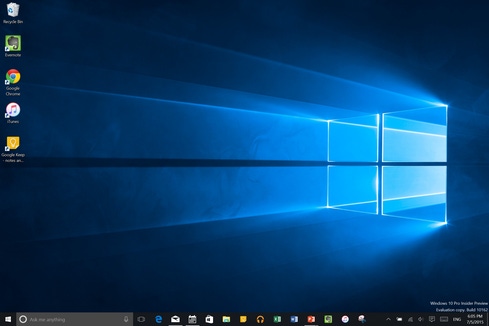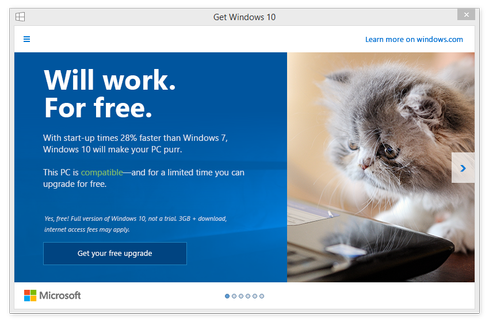After pulling its Windows 10 November update after reported problems with some users' privacy settings preferences, Microsoft reinstates the update.


Windows 10 Mobile, PC Previews: What's Inside
Windows 10 Mobile, PC Previews: What's Inside (Click image for larger view and slideshow.)
Microsoft is once again allowing upgrades to Windows 10 through its Media Creation Tool (MCT) after having pulled the disk images of the November upgrade this past weekend.
The MCT allows clean installations and upgrades without the user having to complete individual downloads through the Windows Update mechanism. It is also the path for Windows 7 and Windows 8 users to create a clean install for Windows 10, which can then be activated with a valid Windows 7 or Windows 8 product key.
A cumulative update for Windows 10 has been posted. It supersedes the one that was released on November 18.
While the initial action caused much confusion in the Microsoft community, the reinstatement should calm things down.
A Microsoft spokesman told InformationWeek late on Tuesday, November 24:
"Recently we learned of an issue that could have impacted an extremely small number of people who had already installed Windows 10 and applied the November update. Once these customers installed the November update, a few of their settings preferences may have inadvertently not been retained. For these customers, we will restore their settings over the coming days and we apologize for the inconvenience. We worked to resolve the issue as quickly as possible. It will not impact future installs of the November update, which is available today."
That explanation by Microsoft glosses over a number of things.
When asked to further clarify whether the MCT upgrade path was going to be enabled again, the spokesperson told InformationWeek:
"Yes. The issue has been resolved and we are resuming our roll-out of the November update to Windows 10 customers via Windows Update. While Windows Update continues to be the preferred path for people to receive updates, we have made the November update available via the media creation tool again."
That leaves a pretty big question on the table. Specifically, why was it necessary to take it down in the first place?
What, exactly, were those settings preferences that the spokesperson says were affected? ZDNet writes that there were four: "Let apps use my advertising ID," "Turn on SmartScreen Filter for web content," "Let apps run in the background," and "Sync with devices."
These kinds of settings are supposed to migrate to the new installation, if they were previously set in Windows 10. Evidently, these four settings did not transfer, and ended up being reset to the default values.
[Read how Windows 10 enterprise adoption is set to grow by 2017.]
Here's where it gets interesting. All of these settings fall under "Privacy." One can only imagine how sensitive Microsoft must be about seeming to stealthily change a user's privacy settings during an upgrade.
Redmond's sensitivity to privacy appearances may also explain why information surrounding this entire kerfuffle has been so vexing and confusing.
While initial comments pointed to a major shift in delivering upgrades exclusively through Windows Upgrade, Microsoft's latest action clearly shows this was never going to be the case. It seems obvious now that Microsoft should have been clearer at the outset about what it was doing and how it was going to be doing it.
**New deadline of Dec. 18, 2015** Be a part of the prestigious InformationWeek Elite 100! Time is running out to submit your company's application by Dec. 18, 2015. Go to our 2016 registration page: InformationWeek's Elite 100 list for 2016.
About the Author(s)
You May Also Like







